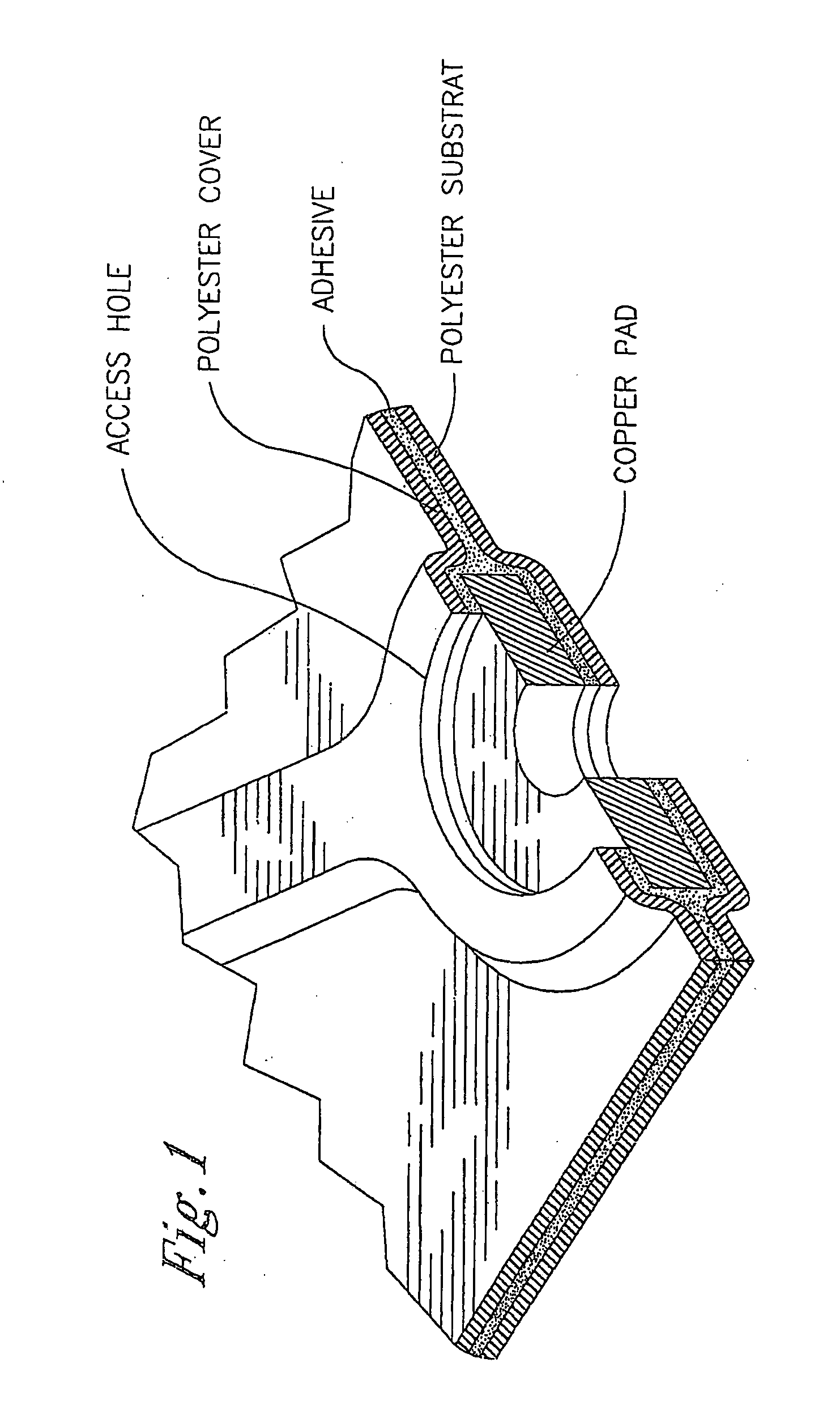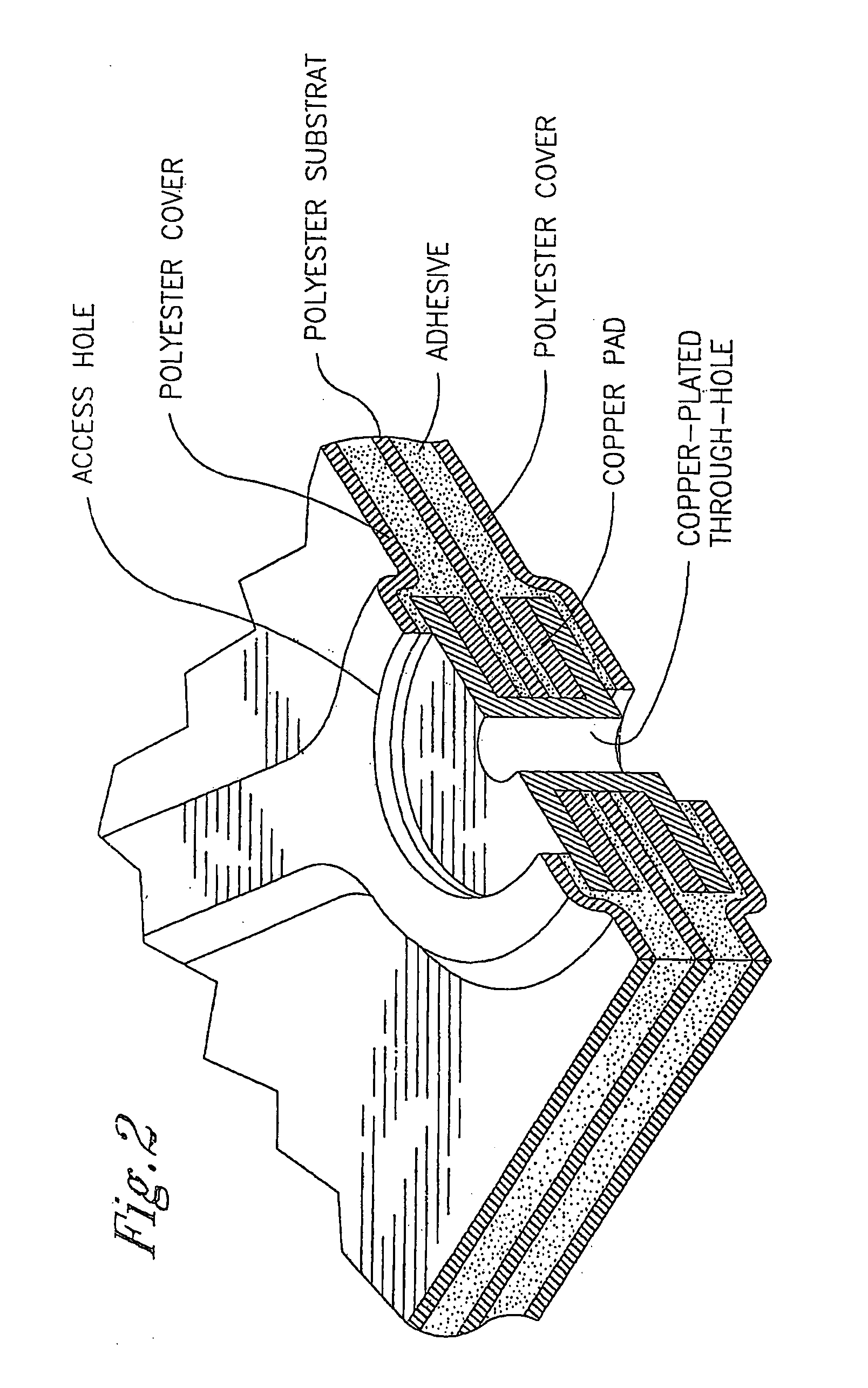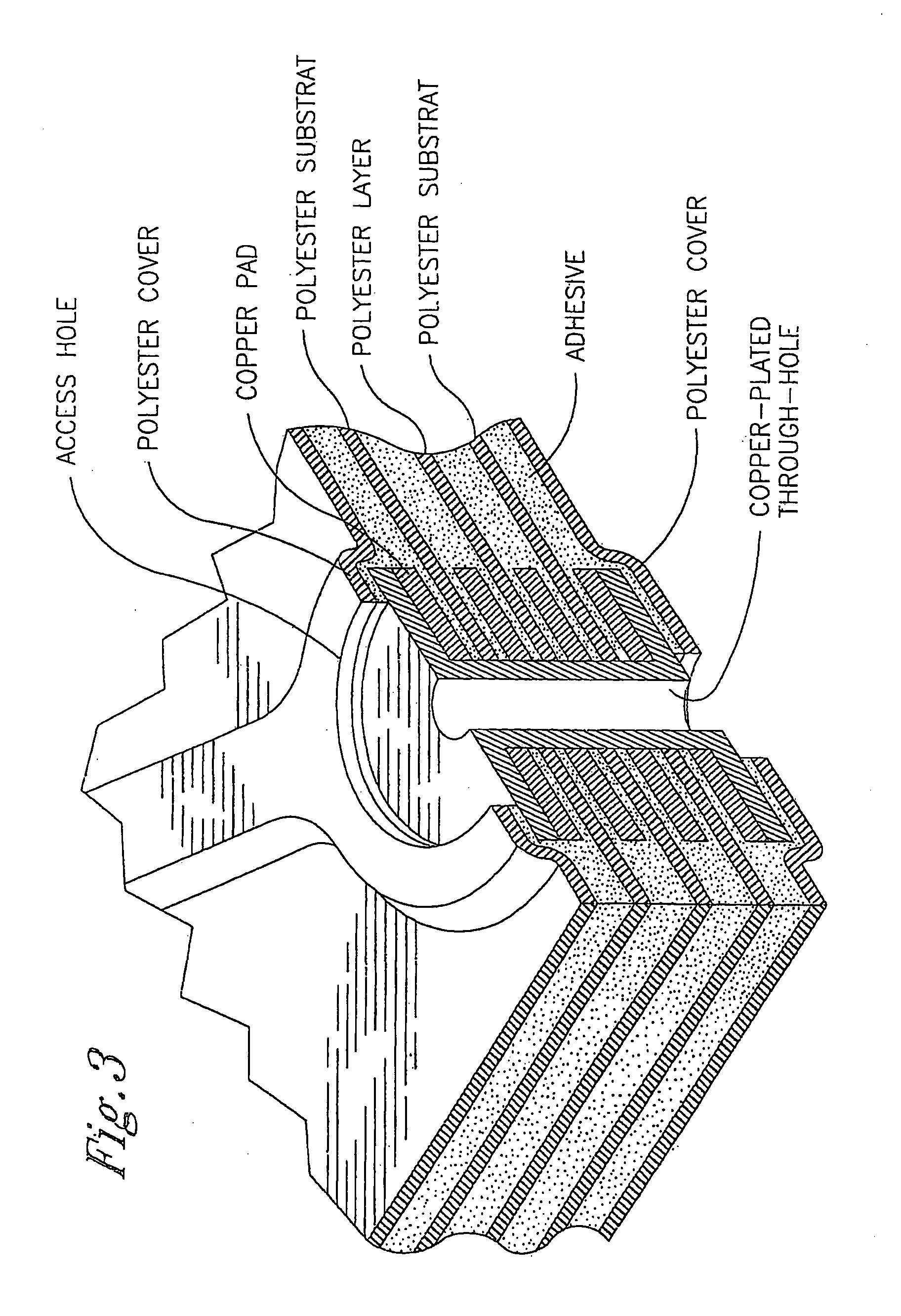Biaxially oriented copolyester film and laminates thereof with copper
a copolyester film and copolyester technology, applied in the direction of natural mineral layered products, transportation and packaging, synthetic resin layered products, etc., can solve the problems of difficult to obtain an essentially amorphous cast or polished film at thicknesses greater than 400 microns (16 mils) and the lik
- Summary
- Abstract
- Description
- Claims
- Application Information
AI Technical Summary
Benefits of technology
Problems solved by technology
Method used
Image
Examples
examples
[0114] Solder resistance was measured according to IPC-TM-650 2.4.13.1 with the solder bath temperature set at 260° C.
[0115] The specimens tested in the following examples were not made into laminates, were not etched, and were unclad, i.e., neither coated nor laminated.
[0116] Film shrinkage was determined by measuring the dimensions of a 5.1 cm×5.1 cm (2×2 inch) film sample at two locations in the MD (machine direction) and two locations in the TD (transverse direction). The film sample then was immersed in a solder bath preheated to 260° C. for 10 seconds as described herein. The film was observed for blisters and wrinkles. The dimensions were then measured again. Each dimension after immersion was subtracted from the original dimension and then divided by the original dimension to obtain percent shrinkage. The four percent shrinkage values (2 for MD and 2 for TD) were averaged together to obtain the overall percent shrinkage.
[0117] Haze was measured according to ASTM D1003.
example set 1
[0118] Comparative Examples C-1 and C-2, and Example 1 demonstrate the effect of composition on the ability to extrude and cast amorphous films from PCT and from PCT pellet-blended with various amounts of a copolyester comprising 95 mol % terephthalic acid and 5 mol % isophthalic acid as the acid component, and 100 mol % 1,4-cyclohexanedimethanol (CHDM) as the glycol component (hereafter referred to as PCTI).
[0119] Pellets of each were prepared in a melt-phase polycondensation process using 100 ppm Ti catalyst (as titanium isobutoxide). The pellets were dried at 150° C. for 4 hours and subsequently extruded into sheeting of 430, 550, and 750 microns thick on a 64-mm (2.5 inch) barrel diameter, 24:1 L / D extruder. The melt temperature and die temperature were maintained at 315° C. The sheets were cast through a 21-inch wide die onto a casting drum with roll temperatures set at 15° C. (60° F.). A pinning wire was used to facilitate intimate contact of the melt with the casting drum so...
example set 2
[0124] Comparative Example C-3 and Examples 2 through 8 further demonstrate the effect of composition on the ability to extrude and cast amorphous films from PCT and from PCT pellet-blended with various amounts of a copolyester comprising 95 mol % terephthalic acid and 5 mol % isophthalic acid as the acid component, and 100 mol % 1,4-cyclohexanedimethanol (CHDM) as the glycol component (hereafter referred to as PCTI).
[0125] Pellets of each were prepared in a melt-phase polycondensation process using 100 ppm Ti catalyst (as titanium isobutoxide). The pellets were dried at 150° C. for 4 hours and subsequently extruded into a 900-micron thick sheeting on a 52-mm (2.0 inch) barrel diameter, 30:1 L / D extruder. The melt temperature and die temperature were maintained at 310° C. Each sheet was cast through a 21-inch wide die onto a casting drum with roll temperatures set at 55° C. (130° F.). An air knife was used to facilitate intimate contact of the melt with the casting drum so as to ha...
PUM
| Property | Measurement | Unit |
|---|---|---|
| Temperature | aaaaa | aaaaa |
| Temperature | aaaaa | aaaaa |
| Temperature | aaaaa | aaaaa |
Abstract
Description
Claims
Application Information
 Login to View More
Login to View More - R&D
- Intellectual Property
- Life Sciences
- Materials
- Tech Scout
- Unparalleled Data Quality
- Higher Quality Content
- 60% Fewer Hallucinations
Browse by: Latest US Patents, China's latest patents, Technical Efficacy Thesaurus, Application Domain, Technology Topic, Popular Technical Reports.
© 2025 PatSnap. All rights reserved.Legal|Privacy policy|Modern Slavery Act Transparency Statement|Sitemap|About US| Contact US: help@patsnap.com



